
 上空から東京を望んで
上空から東京を望んで
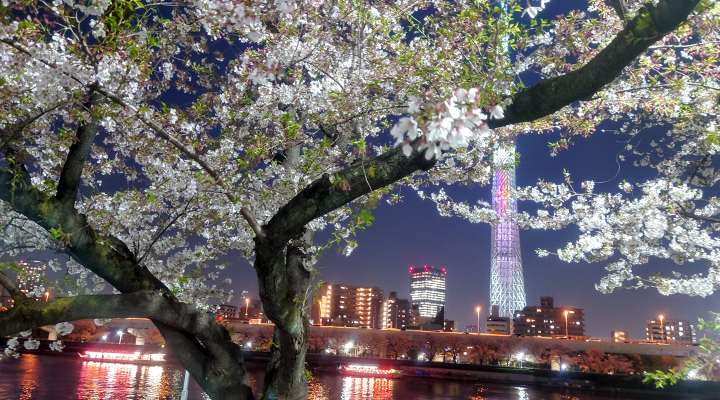 墨田川
墨田川今日の東京
二十一世紀も発展し続ける街、東京。この巨大都市は、徳川幕府の時代に入ろうとした
とき、江戸湾岸に建設されました。 現在は、東に荒川、隅田川、西に中仙道、南に東京湾、北に多摩丘陵を持つ理想的な地形に見えます。関東平野は日本最大の耕作地となっています。しかし、当時、江戸は人が住むのには、最低最悪の地域だったのです。江戸時代以前には、東京や江戸などという土地は無かったのです。 つまり江戸は、奈良や京都などとはまったく違った人工の街になったのです。
最悪の場所の原因は、河川にありました。
Tokyo Today
Tokyo is a city still developing in the 21st century.
This megacity was built on the shores of Edo Bay when it was about to enter the
Tokugawa Shogunate era.The Kanto Plain is the largest cultivated land in Japan.At that time, Edo was the worst area for people to live in.
Edo has become an artificial city completely different from Nara and Kyoto.
The rivers around Edo were the worst facter of the worst place.
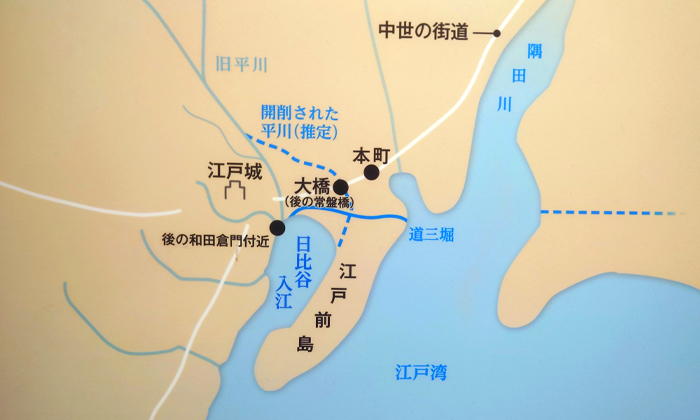 江戸時代以前の江戸
江戸時代以前の江戸恒常的水害
江戸の東側には、暴れ川が多く、年中洪水水といった水害を引き起こしていました。その辺は、湖が後退した ばかりの湿地帯で、少しの雨でも、江戸の東から今の銀座のあたりまで水没していたのです。 江戸の東側には、古利根川の墨田川や中川といった暴れ川が多く、年中洪水や冠水といった水害を引き
起こしていました。現在の銀座周辺は日比谷入り江という湾でした。
Permanent flood damage
On the eastern side of Edo, there were many rampage rivers that caused floods such as floods all year round.The area was a wetland where the lake had just receded, and even a little rain was submerged from the east of Edo to the area around Ginza today.On the east side of Edo, there are many rampage rivers such as the Sumida and Nakagawa rivers of the Furutone River.It caused floods and floods all year round.The area around Ginza today was a bay called Hibiya Inlet.
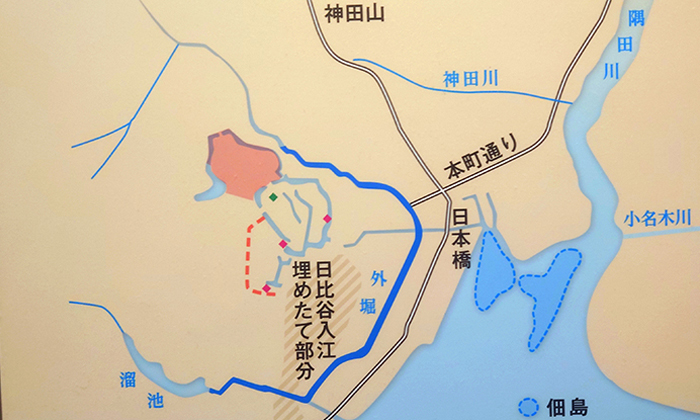 入り江の埋め立て後の江戸と江戸城
入り江の埋め立て後の江戸と江戸城東京の河川
あばれ川というのは荒川です。
現在の埼玉県あたりではとなりの入間川と同時に氾濫し、その一帯を水没させていました。この荒川の支流は、現在の隅田川なります。また、別のあばれ川は江戸川になります。最も氾濫が大きかったのが利根川で、そばに流れるいくつかの河川が集まって、現在の江戸川放水路近辺に流れ出ていたのです。江戸は、多くの河川が流れ出る湿地帯だったのです。京都から東海道を上って海沿いに旅してくると、この利根川が自然の障壁となり、江戸あたりで行き止まりとなったのです。したがって、そこから東の千葉や茨城などにはまったく、行くことができなかったのです。
Arakawa used to be a rampage river.
Arakawa flooded at the same time as the neighboring Iruma River, submerging the area.The tributary of this Arakawa is the current Sumida River. The Tone River was the most inundated, and several rivers that flowed by it gathered and flowed out near the current Edo River Flood Bypass. the Tone River became a natural barrier and became a dead end around Edo. Therefore, nobody could go to Chiba or Ibaraki in the east from there at all.
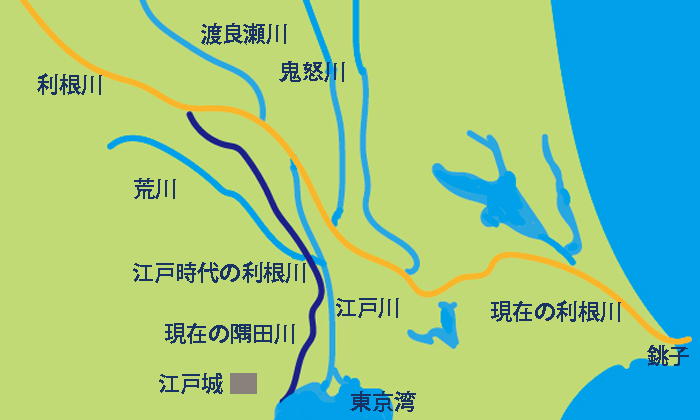 現代と江戸時代の利根川
現代と江戸時代の利根川江戸を作るために、暴れ川と闘う。
徳川家康は、江戸を政治の中心とし、未来に渡って繁栄を築くためにも、この河川の氾濫が多い地域の治水を改良することが不可欠と考えました。
さらに、霊的にも改善を施すために、風水の知識を注ぎ込み、江戸城を中心として、壮大な都市計画を実行したのです。江戸の大工事は、水を治めて下町を作ることから始まりました。江東を流れる三本のあばれ川の力を分けるために、利根川を江戸湾ではなく千葉のほうへ流すことにしたのです。
Fight the rampage river to make Edo.
Ieyasu Tokugawa thought that it was essential to improve the hydraulic control
of this flooded area in order to constract Edo as the center of politics.
In order to make spiritual improvements, he and tenkai poured his knowledge of
Feng Shui and carried out a magnificent city plan centered on Edo Castle.
The major construction work in Edo began with controlling the water and
creating a downtown area.
In order to divide the power of the three Abare Rivers that flow through Koto,
we decided to flow the Tone River toward Chiba instead of Edo Bay.
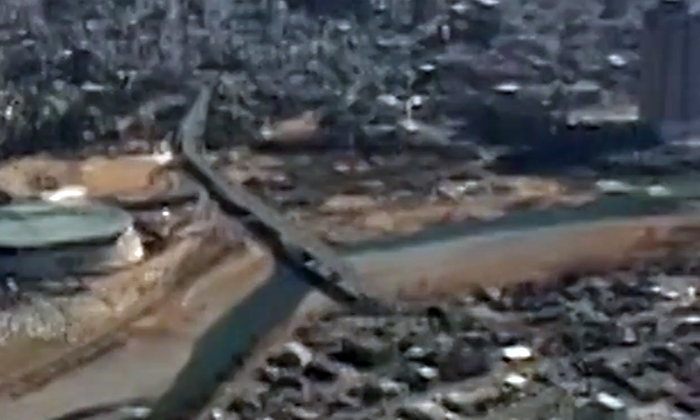 利根川
利根川暴れ龍の川、利根川の首を切り落とす
江戸時代以前は川は暴れる龍にたとえられていました。徳川家康の死後も江戸の街を作るため何度のも失敗を繰り返しながら家康の意思を継ぎ治水工事は行われてきました。寛永年間、一六ニ一年から三十年余りの歳月を掛け、利根川本流を銚子の先から太平洋に吐き出させました。まさしく、あばれ龍で最も大きな一頭の首を切り落とし、残った胴体を東に向けさせたことになります。この切り落とされた首根っこの名残りが、旧江戸川で、さらにこれを新しく飼い慣らした様に見えるのが、現在の荒川なのです。そしてここには、中川もまとめられているのです。
Cut the neck of the Tone River
the rampage dragon river.Before the Edo period, the river was likened to a rampaging dragon.Even after Ieyasu Tokugawa's death, hydraulic engineering work has been carried out.
it took about 30 years from 1621 to spit out the main stream of the Tone River.It run to the tip of Choshi into the Pacific Ocean in stead of flow to Edo Bay,
One of the largest rampage dragons was decapitated and the remaining torso turned east.The remnants of this cut-off neck are tamed Arakawa River with Nakagawa River.
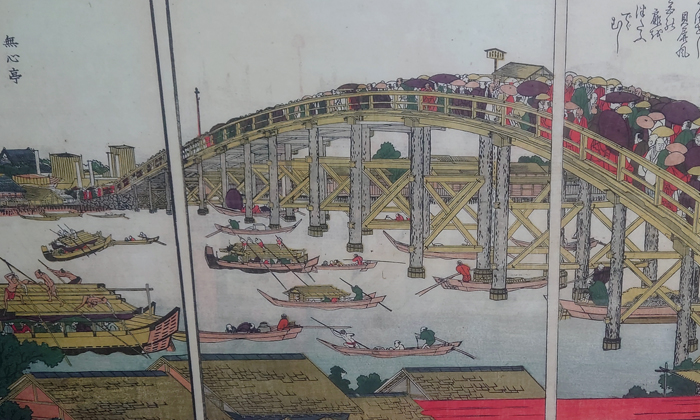 両国橋
両国橋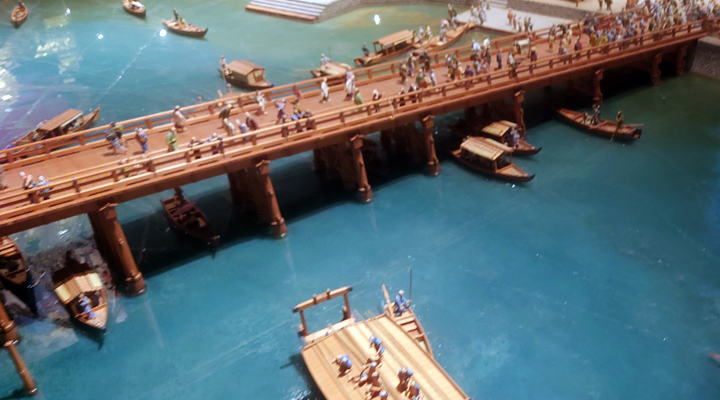 両国橋模型
両国橋模型 墨田川の大工事
現在の墨田区と江東区の間を流れる墨田川は以前は大川とも呼ばれ、江戸以前は、入間川から流れ込む水を溢れさせていました。寛永年間、 1624年から20年を掛け、入間川から切り離される工事が行われました。荒川と入間川という龍の首二つが切り落とされ、江戸の飼い龍になったわけです。同時に江戸幕府二代将軍・徳川秀忠の命を受けた仙台藩祖・伊達政宗が1620年に仙台堀(神田川)を開削したことにより、武蔵野台地の端の湯島台と駿河台とに分離され、孤立した高台となりました。お茶の水駅の北の堀が深いのもこのためで、神田川は江戸城の外堀となりました。
両国橋
家康は1594年に隅田川で最初の橋である 千住大橋 を架けています。 1657の明暦の大火で大勢の死者を出すまでは、江戸の防御のために この橋以外は隅田川に橋を架けるのが禁止されていました。明暦の大火の後に、隅田川で2番目となる 両国橋 が架けられました。
Ryougokubashi bridge
Ieyasu built the Senju Ohashi Bridge, the first bridge on the Sumida River, in 1594.Until the Great Fire of Meireki in 1657 killed many people, it was forbidden to bridge the Sumida River except for this bridge to protect Edo. After the great fire of the Meiji calendar, the second Ryogoku Bridge on the Sumida River was built.
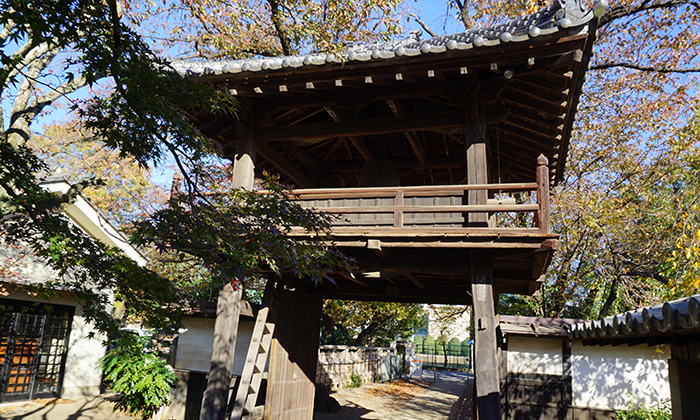 川越の天台宗別格本山中院
川越の天台宗別格本山中院風水思想の反映
1653年には多摩の羽村から四谷までの高低差92.3メートルの間に全長42.74キロメートルにわたる玉川上水が築かれました。この工事により江戸市中へ飲料水の供給を可能としました。
この江戸河川の大工事こそ、まさに、風水の考え方を表していたのです。
なぜなら、風水とは、台風や水害から土地を守るという考え方に他ならないからです。すると、龍の切り落とされた首のあたりに、暴れ龍封じのために要石か護符が置かれなければならないことになります。その近くにある神社仏閣が、それにあたります。
Feng Shui Thought
In 1653, the Tamagawa Josui、clean water canal was constructed from Hamura in Tama to Yotsuya, north gate od Edo castle. The height difference is 92.3 meters and overall length is 42.74 kilometers.This great construction in Edo represented the Feng Shui thpught.Because Feng Shui is nothing but the idea of protecting the land from typhoons and floods. Then, a keystone or amulet should be placed around the cut-off neck of the dragon to appease the rampage dragon. The shrines and temples are built along tmagawa Jousui due to Feng Shui Thought.
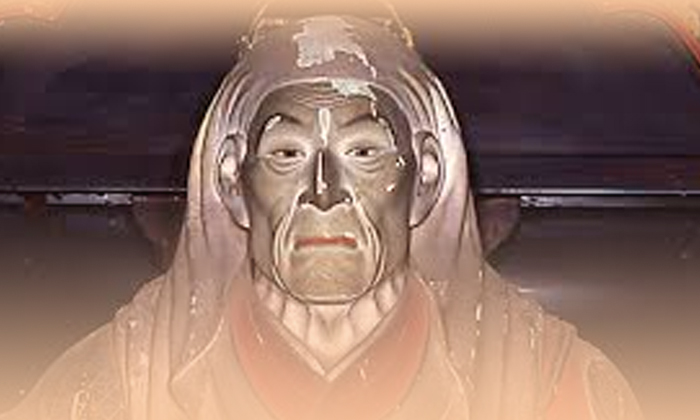 天海僧正
天海僧正計画を立案した天海僧正
江戸に霊的な防御を形造ったの は、天台宗の天海僧正だといわれています。
天海僧正は、江戸に風水のバリアを張り巡らせるために多くの神社仏閣を建立しました。
わたしたちが見かけるたくさんの神社や寺には、風水的に多くの呪術が施されています。
天海の風水とは、どんなものなのでしょうか。関ケ原の戦いに勝利した後、家康は、1603年に幕府を開くにあたり、天海の助言を参考にしながら、江戸の地を選んだとされています。天海は古代中国の陰陽五行説にある「四神相応」の考えを参考にして、江戸が幕府の本拠地に適しているしたとされています。中国の北京や韓国のソウルも風水思想に基づき設計されたと言われています。また香港ビルの設計にも風水思想が強く繁栄されています。
Tenkai's plan
It is said that Tenka of the Tendai sect formed the spiritual defense in Edo.
The Tenkai built many shrines and temples to build a feng shui barrier in Edo.
Many of the shrines and temples we see are feng shui-like with many spells.
What is Feng Shui in Tenkai? After winning the Battle of Sekigahara, Ieyasu opened the shogunate in 1603.
It is said that he chose the land of Edo while referring to the advice of Tenkai.
Tenkai refers to the idea of the ancient Chinese Ying-Yang Five Elements theory,
Edo was suitable for the headquarters of the Shogunate.
It is said that Beijing in China and Seoul in South Korea were also designed based on the idea of Feng Shui.
The idea of Feng Shui is also prospering in the design of the Hong Kong building.
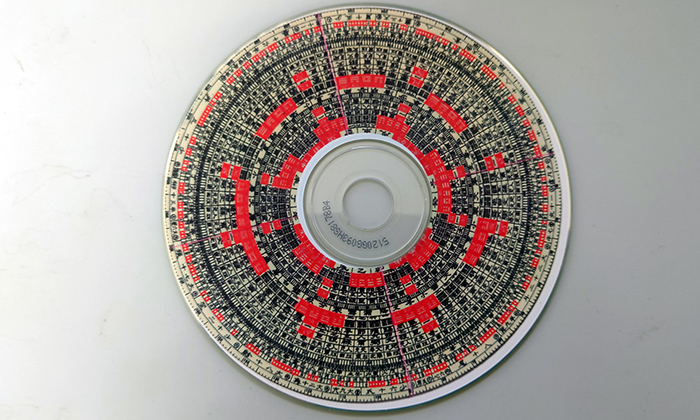 風水版
風水版
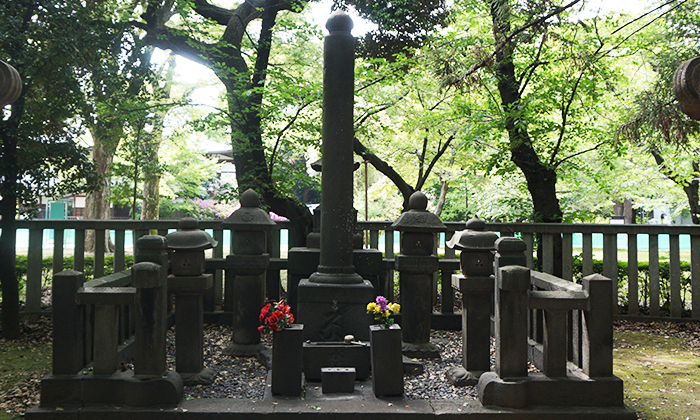 上野公園の天海僧正毛髪塔
上野公園の天海僧正毛髪塔
天海の素姓
天海は、京都を守護する比叡山天台宗のお坊さんでした。ただその前半生は全く謎に包まれています。会津に生まれ全国で熱心に修行を重ねて徳の高い僧侶になりました。本多正信の紹介にて駿府城にて初めて家康と対面したと言われていますが、秀吉の小田原攻めにも参陣したなどと諸説あります
第3代将軍「徳川家光」の乳母の春日局は光秀の重臣、斎藤利三の娘、家光の光は光秀の光と言われていることから
「天海=明智光秀」説がいまだに信じられています。この説は両名の筆跡観点によりほぼ否定されています。春日局は公募で乳母になったと言われていますが、将軍家の乳母には身元がはっきりした人しかなれないはずです。天海が明智家と何らかの繋がりがあり、明智の血を引く春日局を家康に推挙したこともありえます。
天海は神道や密教、さらには風水秘術などを習得した江戸時代初期の最も力のあるオカルト能力者だと信じられていたのです。
おそらく、天海は江戸をも京都に似せて天台宗の呪術で守護しようと考えたと思われるのです。
Identity of Tenka
Tenkai was a Buddhist priest of the Tendai sect of Heizan to protect Kyoto.However, the first half of the life is completely mysterious.Born in Aizu, he practiced enthusiastically all over the country and became a highly virtuous monk.
It is said that Masanobu Honda introduced me to Ieyasu for the first time at Sunpu Castle.
They say he participated in Hideyoshi's attack on Odawara with Ieyasu.Kasuga no tubone is th nanny of the third shogun "Tokugawa Iemitsu"
She is the daughter of Mitsuhide's chief retainer, Toshimitsu Saito,
since the theory, "Mitsuhide, was Tenkai" is still believed.This theory is almost denied by the handwriting perspective of both names. It is said that the
Kasuga no tubone became a nanny by open recruitment,
The nanny of the shogunate should only be a well-identified person.
Since Tenkai has some connection with the Akechi family,
it is possible that Ieyasu recommended the Kasuga no tubone who has the
lineage of Akechi.Tenkai was believed to be the most powerful occult psychic in the early Edo period,
who learned Shinto, esoteric Buddhism, and even Feng Shui mystery.
Perhaps Tenkai wanted to make Edo look like Kyoto and protect it with the magic of the Tendai sect.
 喜多院慈恵堂
喜多院慈恵堂川越という地名の由来
天海が川越にある喜多院の住職になった時、天台宗の関東総本山として、ここを東の比叡山 、東叡山と名づけました。川越という土地も、その名が示すように川を越える土地、つまり入間川と荒川、 二つの龍を押さえるための場所になっているのです。慈恵堂は比叡山延暦寺第18代座主の慈恵大師をまつっています。1639年の大火以後、いち早く再建されました。
Origin of the place name Kawagoe
When Tenkai became the chief priest of Kitain in Kawagoe,
he became the head temple of the Tendai sect in the Kanto region.
He named Kitain Toeizan.As the name implies, the land of Kawagoe also crosses the river, that is, the Iruma and Arakawa rivers.
It is a place to hold down the two dragons. Jieido is dedicated to Jie Daishi, the 18th lord of Enryakuji Temple on Hieizan.
It was quickly rebuilt after the great fire of 1639.